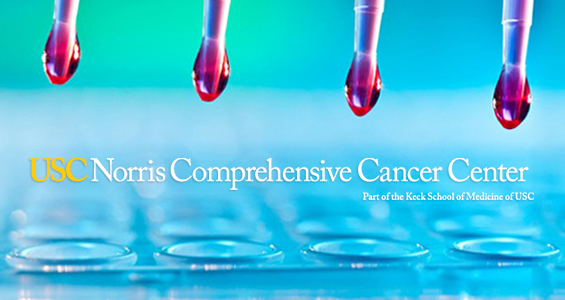I couldn’t be more excited to announce that I just finalized my agreement with University of Southern California (USC) Norris Comprehensive Cancer Center and I’ll personally be investing $500,000 with the facility over the next five years to move the following initiatives forward:
-
Pituitary-Leydig Axis Dysfunction Prior To Orchiectomy In Testicular Germ Cell Cancer
Hypogonadism and Leydig cell dysfunction have been reported in men after treatment for testicular cancer, even after orchiectomy alone. There is however a paucity of data regarding pre-orchiectomy hormonal dysfunction. This is the largest study documenting the pituitary-Leydig axis abnormalities in all stages of testis cancer prior to orchiectomy. We are using our testis cancer database to identify men who have hormonal abnormalities to determine what factors lead to hormone deficiency in these patients.
-
Phase II Trial of Retroperitoneal Lymph Node Dissection as First-line Treatment for Testicular Seminoma with Isolated Retroperitoneal Disease
Standard treatment for seminoma type germ cell tumors of testis presenting as stage IIA or as stage I with subsequent progression to isolated retroperitoneal recurrence includes external beam radiotherapy (XRT) or systemic chemotherapy (CT). Though these treatments are efficacious, with five year relapse-free survival upwards of 90%, they are associated with significant long-term morbidity. These morbidities can be significant and the effects are often accentuated given the long life expectancy of testicular cancer survivors.
Though modification of current strategies may mitigate the risks of treating advanced seminoma, a change in treatment paradigm may be necessary to make a more significant impact. For this reason, we are proposing investigating retroperitoneal lymph node dissection (RPLND) as a first-line treatment for testicular seminoma with isolated, low-volume retroperitoneal disease.
-
Investigator-Initiated Proposal for Gene Expression Profiling in Early Stage Testicular Germ Cell Tumors
Defining risk factors for recurrence after orchiectomy in clinical stage I seminoma and non-seminoma has become increasingly important in the modern era. For reasons that are not entirely clear, there has been a substantial shift to earlier presentations of testicular cancer and in 2013, approximately 80% of patients with testicular seminoma and approximately 65% of patients with nonseminoma present with clinical stage I disease. This project is a multi-center effort to develop an expression signature composed of genes involved in cell cycle progression in samples from patients with early stage testicular cancer.
-
Androgen Replacement Therapy in Patients with Unilateral Testicular Cancer
We are looking at the IMS Lifelink and IngeNix national databases to see how many are currently on testosterone replacement therapy. Within the IngeNix database there are 2,700 testis cancer patients And 245 have been treated with testosterone replacement. Will are examining the demographic/timing and looking through other databases to compare these results. Within our own cohort of patients approximately 15% have hypogonadism following orchiectomy and treatment for testicular cancer. We plan androgen receptor genotypic analyses in conjunction with the work on circulating androgen levels and androgen replacement.
-
Testicular Cancer Patient Database
Dr. Daneshmand, Associate Professor of Urology (Clinical Scholar) and Director of Urologic Oncology, USC Institute of Urology, through his testicular cancer research program has developed a robust database of patients’ clinical information that helps to guide future treatment and surveillance of survivors. He has assembled a team of first class researchers for this effort and they are poised to become one of the leading testis cancer treatment and research centers in the United States. Under Dr. Daneshmand’s leadership, the innovative research project includes:
- Continually accruing patient information to comprehensive database to capture clinical data for analysis.
- A full-time research coordinator who works to compile clinical data from the past two decades, which is then used to inform new studies.
- One of the largest tissue banks for testis tumors (partially funded by the Lance Armstrong Foundation) which allows for work on the molecular pathways of germ cell tumor development and treatment failure.
- Working with a molecular epidemiologist to conduct population-based studies looking at modes and stages of presentation in different ethnic groups.
- A research fellow and a clinical fellow, focused on testis cancer research, who both help Dr. Daneshmand to manage his numerous research studies at any given time.


Leave a Reply